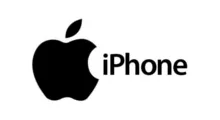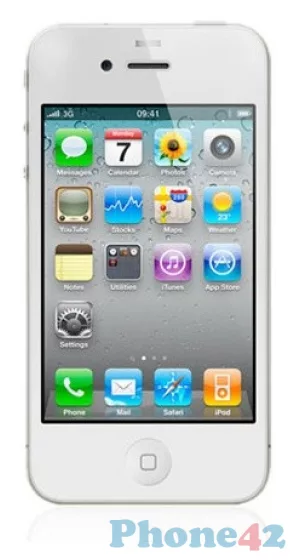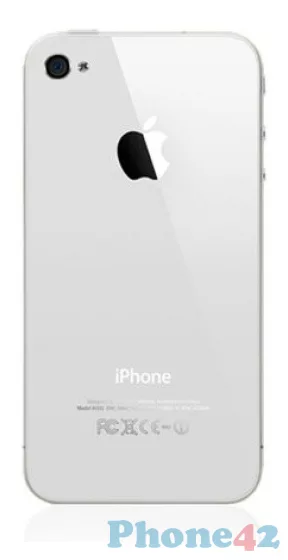
Apple iPhone 4 (2010)
The manufacturer offers this phone with a 3.5 inch IPS display, a Apple A4 chipset, and 512 MB of RAM.
Is this phone a good value for its price? My review aims to answer that question by the end.
Table of Contents
- Apple iPhone 4 specifications
- Weight, dimensions, colors
- System, chipset, performance
- Display type, size, resolution
- Memory, storage
- Cameras, flash
- Connectivity, network, wireless
- Battery type, capacity, charger
- Features, sensors, specials
- Verdict, pros and cons
This article shares our personal experiences and thoughts about using the Apple iPhone 4 smartphone. We hope to offer helpful insights to others interested in this device.

Apple iPhone 4 specifications
| Brand | Apple |
|---|---|
| Name | iPhone 4 |
| Model | IP4 |
| Release date | 2010 |
Weight, dimensions, colors
| Weight | 4.83 oz |
|---|---|
| Dimensions | 4.54 x 2.31 x 0.37 inch |
| Colors | black, white |
| SIM type | Micro SIM |
The weight of the Apple iPhone 4 is still considered to be lightweight and portable. A micro SIM is larger than the current standard Nano SIM card but smaller than the older SIM card size.
System, chipset, performance
| OS version | iOS 4 |
|---|---|
| SoC | Apple A4 |
| CPU | 1 GHz Cortex-A8 |
| GPU | PowerVR SGX535 |
The Apple iPhone 4 comes with iOS 4 out of the box. iOS includes a range of proprietary features and apps, such as Siri, FaceTime, and iMessage. This Apple A4 CPU can be fast enough for basic phone operations. Many consider PowerVR GPUs to highly compete with other leading mobile GPUs.

Display type, size, resolution
| Display type | IPS |
|---|---|
| Screen size | 3.5 inch |
| Resolution | 640 x 960 px |
| Multitouch support | yes |
People know IPS for its wide viewing angles. It also has accurate color reproduction. Smaller smartphones are generally more compact and easier to handle. The display size is the diagonal distance from one corner of the screen to the opposite corner.
Memory, storage
| RAM | 512 MB |
|---|---|
| Internal storage | 8 GB |
| Memory card slot | no |
512 MB of RAM is not typically considered to be enough for a smartphone. Having more RAM alone does not guarantee better performance. If we use our smartphones for basic tasks like calling, texting, and browsing the web, 32 GB may be sufficient for our needs. The internal storage of the Apple iPhone 4 (512 MB) cannot be expanded.

Cameras, flash
| Main camera | 5 MP, 2592 x 1936 px, autofocus |
|---|---|
| Flash | LED |
| Selfie camera | VGA |
This single camera can be enough for many smartphone users, it depends on their photography needs and preferences. The iPhone 4 does not have optical image stabilization (OIS).
Connectivity, network, wireless
| GSM 2G bands | 850 / 900 / 1800 / 1900 |
|---|---|
| Network coverage | 2G / 3G |
| Wi-Fi | Wi-Fi 802.11 b/g/n |
| Bluetooth | v2.1, A2DP |
| GPS | A-GPS |
| NFC | no |
| FM radio | no |
| USB | 30-pin dock connector |
| Headphone | 3.5 mm jack |
Compared to modern 4G and 5G networks, 3G networks are much slower. The iPhone 4 supports the latest Wi-Fi standards. We can use Bluetooth to connect our iPhone 4 smartphone to many Bluetooth devices. The iPhone 4 has a GPS receiver. Many fitness and activity tracking apps rely on GPS. It is used to accurately measure and record outdoor activities. The phone isn't NFC (Near Field Communication) capable. NFC is not essential for basic phone functionality, but it can be useful. The 3.5 mm headphone jack allows us to connect wired headphones or earphones to the device.
Battery type, capacity, charger
| Type | Li-Po 1420 mAh, non-removable |
|---|
The Li-Po 1420 mAh, non-removable battery gives the smartphone a good battery backup. The lithium polymer (Li-Po) battery is a light-weight, rechargeable battery. The iPhone 4 does not have a removable battery, it integrates the battery into the phone's design.
Features, sensors, specials
| Sensors | accelerometer, compass, gyroscope, proximity |
|---|
Today, smartphones come with many sensors. They help make the user experience better. The accelerometer provides information about the smartphone's movement in three axes. These are X (horizontal), Y (vertical), and Z (depth).
Verdict, pros and cons
Every phone has its strengths and weaknesses, and this Apple phone is no exception. As with any device, there are aspects that shine and others that fall short. By examining both sides, we can paint a complete picture of what this phone has to offer. Let's explore its standout features and areas for improvement. Remember, this is just my opinion, and yours might be different.
Pros
- none
Cons
- limited-size screen
- insufficient memory
- insufficient internal storage
- non-expandable storage
- single camera setup
- no OIS function
- no 4G support
- no 5G support
- no NFC feature
- low-capacity battery
- no fingerprint reader
Please let us know if you find incorrect information or something isn't working. Also, tell us if you have a suggestion for improvement.
Updated: July 22, 2024
 I'm Lucas Bradley, the founder of the Phone42.com site. I love technology, especially smartphones, and I've been working with tech stuff for more than 20 years. This means I've seen a lot of changes and have learned a bunch about what makes a good phone. On Phone42.com, I look at all kinds of phones. They can be from big, well-known companies or new ones trying to make their mark. I want to help people understand what's new and cool in the world of smartphones, in a way that's easy to get.
I'm Lucas Bradley, the founder of the Phone42.com site. I love technology, especially smartphones, and I've been working with tech stuff for more than 20 years. This means I've seen a lot of changes and have learned a bunch about what makes a good phone. On Phone42.com, I look at all kinds of phones. They can be from big, well-known companies or new ones trying to make their mark. I want to help people understand what's new and cool in the world of smartphones, in a way that's easy to get.